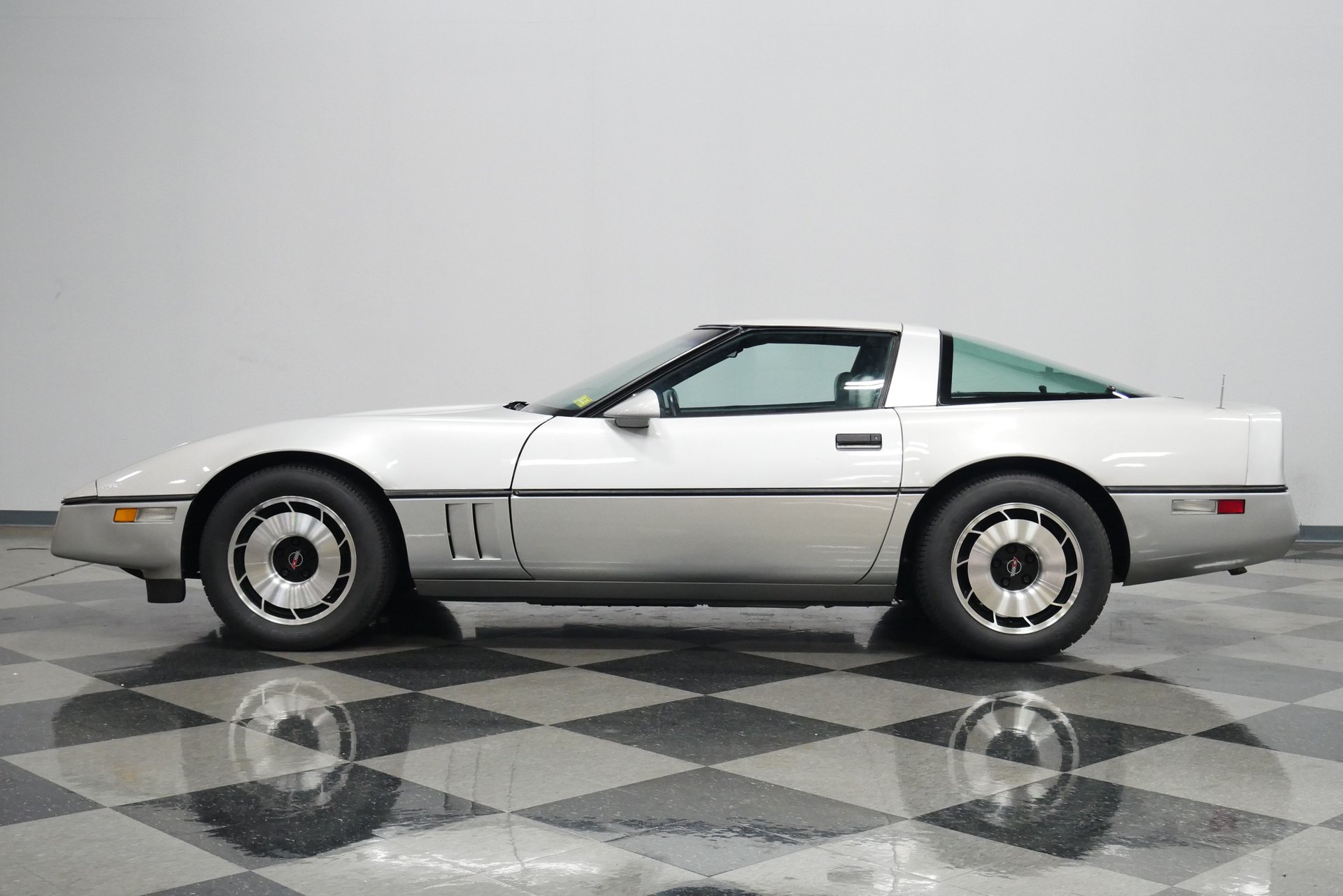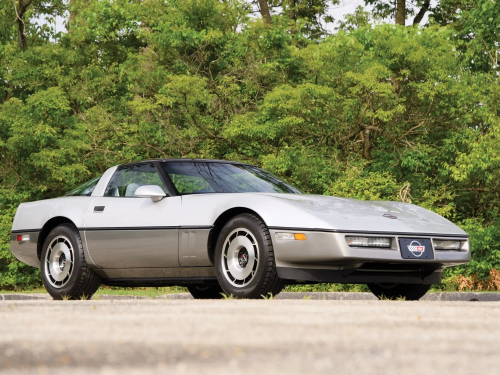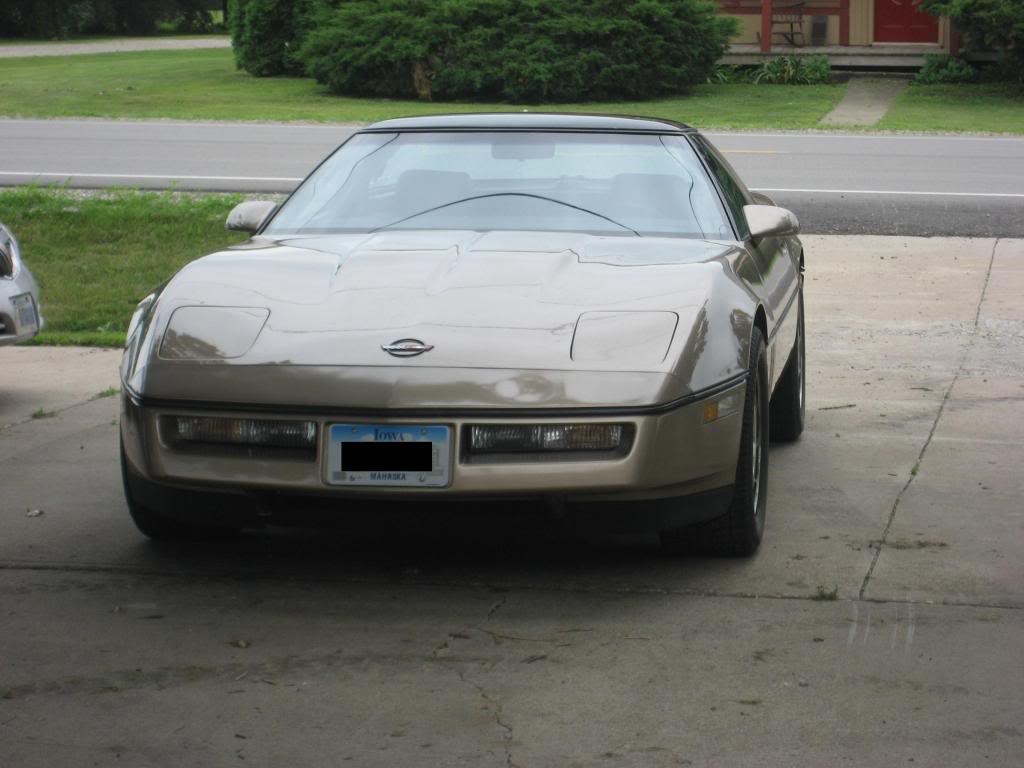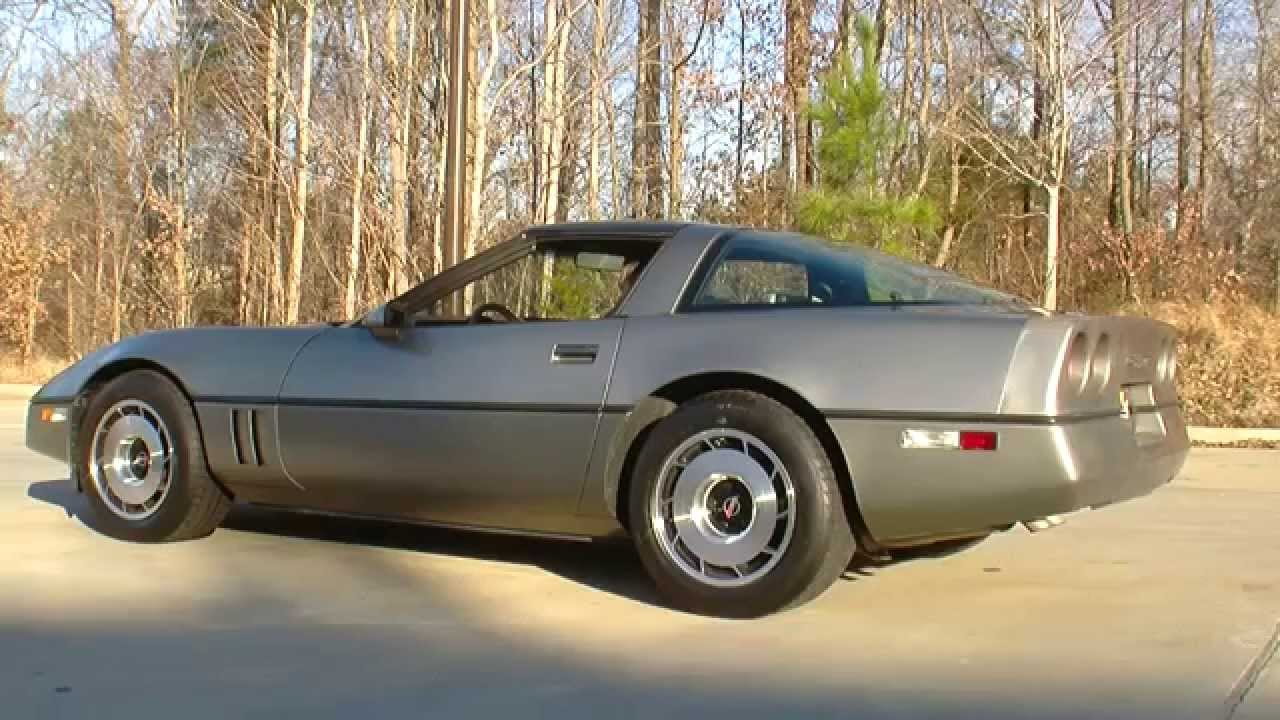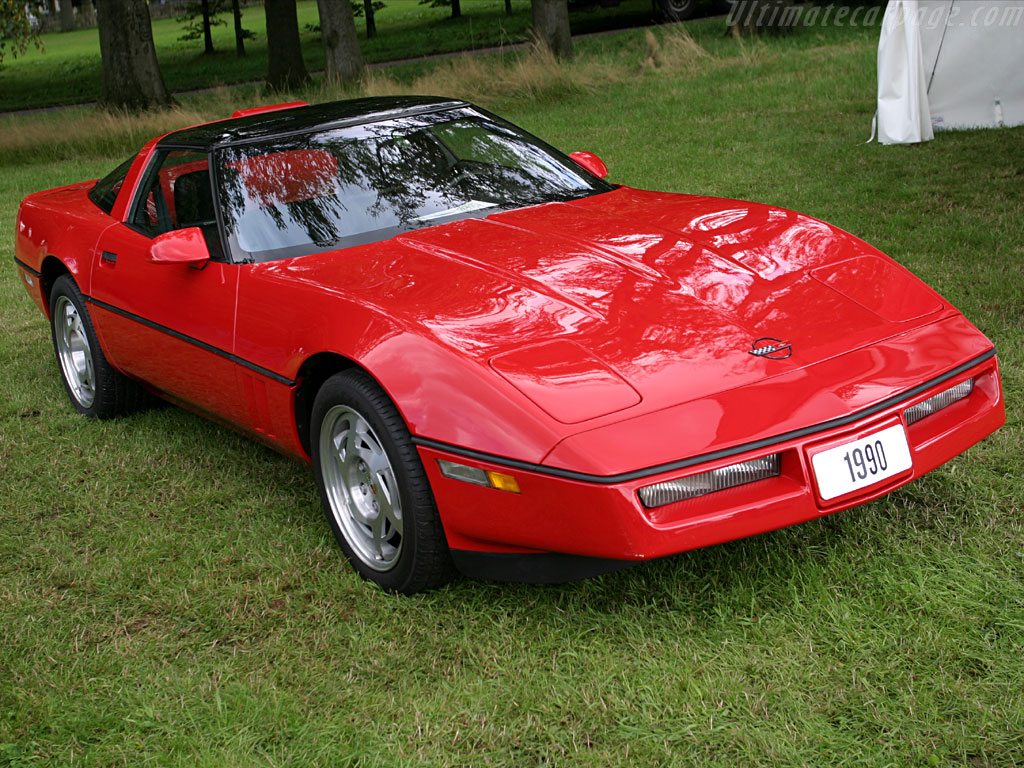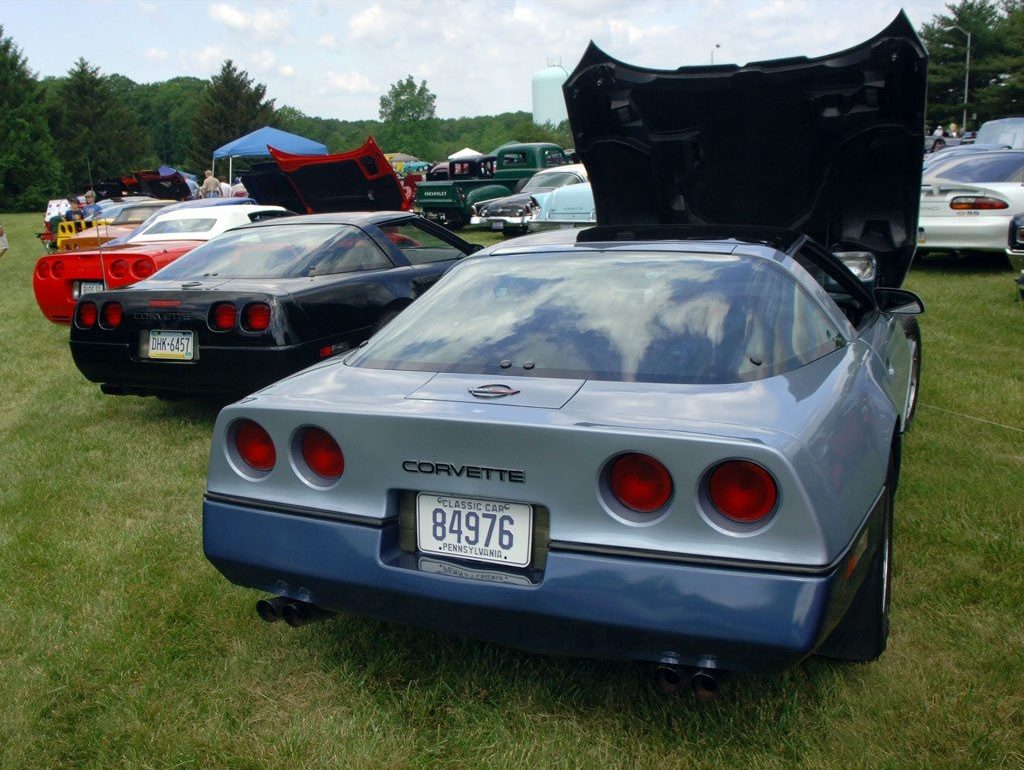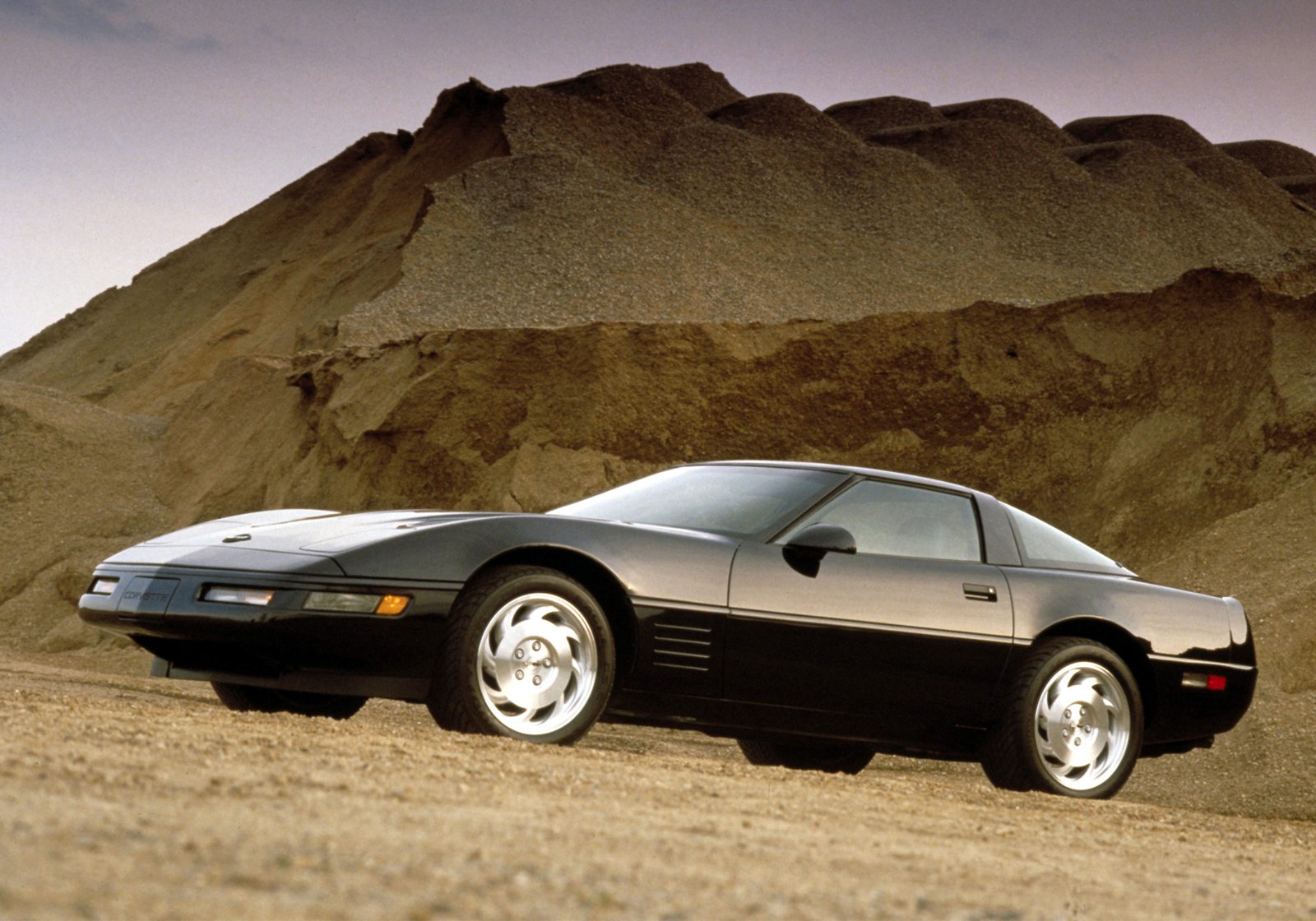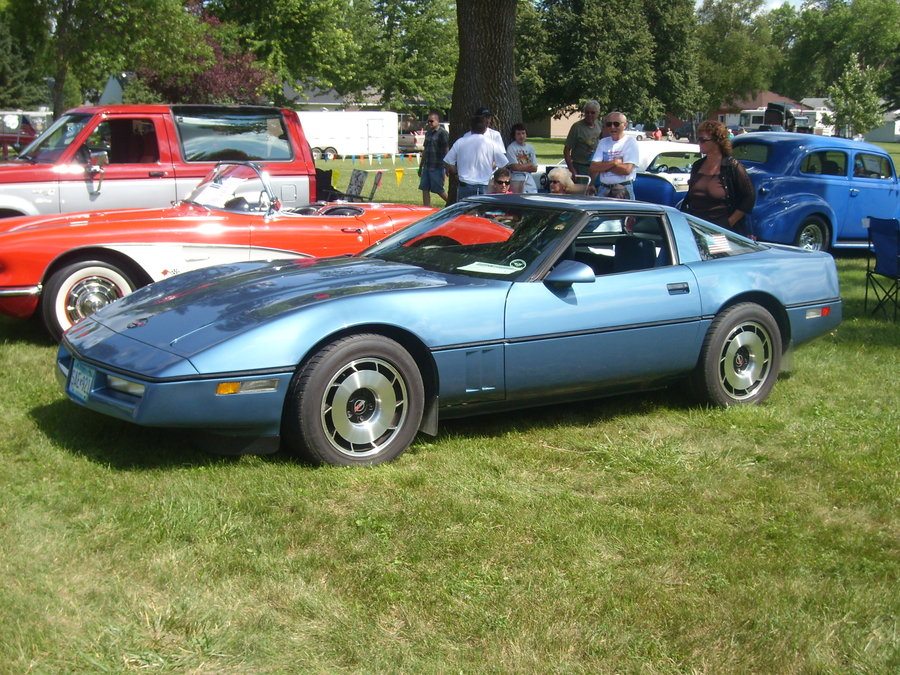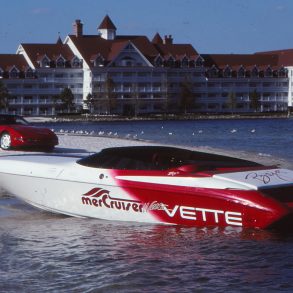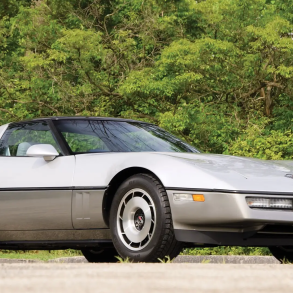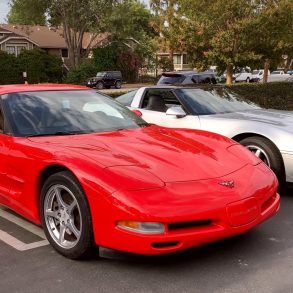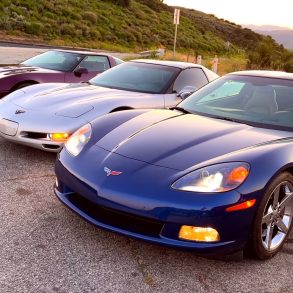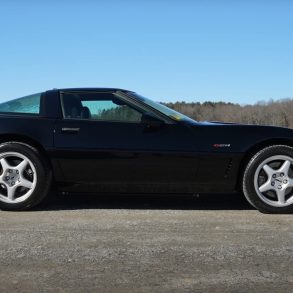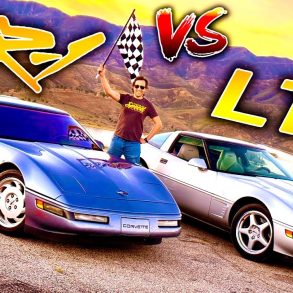1984 Corvette – The Ultimate Guide
The early eighties was a period of technological firsts. Apple Computers introduced the Macintosh computer. NASA introduced Columbia, the first of a fleet of reusable launch vehicles which would come to be known as the “Space Shuttle”. The first laptop computer is marketed by the Tandy Corporation. In short, Americans were moving into a world that was growing increasingly interlaced with technology. They were clamoring for it – in their offices, in their homes, and in their automobiles. General Motors was prepared to answer the technology boom with the introduction of a brand new Corvette.
The 1984 Corvette was unveiled to the public in March 1983. Although there had been rumors and silent rumblings of a new Corvette for several years prior to its unveiling, the arrival of the C4 Corvette was met with overwhelming enthusiasm from both the press and the public. Although the car was a departure from its predecessor in both styling and form, it was still unmistakably a Corvette – although it was definitely a more technologically advanced Corvette than any that had come before it.
Because of its late release (generally, new model year cars are introduced late in the previous year) and the fact that it met all of the 1984 Federal emission requirements, it was decided by Chevrolet’s General Manager, Robert Stempel that the C4 Corvette would bypass the 1983 model year and officially begin production as a 1984 model. Despite much conjecture to the contrary, it is true that General Motors actually began producing the C4 Corvette in 1983. It is rumored that as many as forty-three were built and given unique serial numbers (they would later be re-tagged with new serial numbers that identified the same cars as 1984 model year Corvettes), but were never released for sale in 1983.
Although the 1984 Corvette met the emissions regulations requirements of the day, the development of electronic engine management was still in its infancy. As a result, General Motors engineers were cautious about how much performance output the new small-block 350 engine should really produce. After all, it was widely accepted that increased horsepower resulted in decreased emissions (exhaust air) quality.
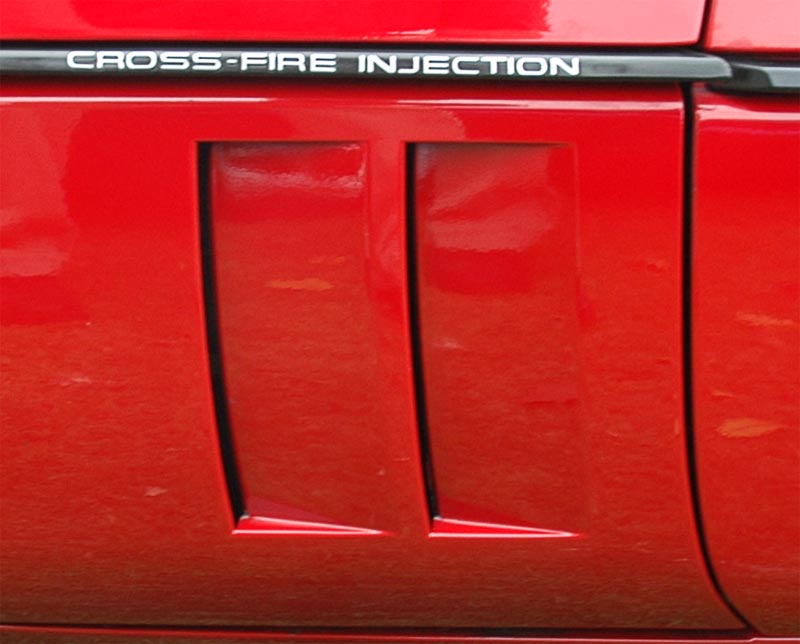
Conscious of maintaining the highest possible emissions standards, it was decided early on that, at least for the first model year, the C4’s primary focus would not be horsepower (as was the norm for generations of Corvettes before it) but handling. Many increases to the overall drivability of the Corvette were made, and a special performance handling package – option Z51 – was introduced for the 1984 model year.
While sales began almost immediately after the arrival of the new Chevy Corvette, GM continued to make ongoing changes to the car’s final layout and design. These “running changes” were made even after sales began. The most significant changes that were made to the 1984 Chevy Corvette from the earlier prototype models included an engine-oil cooler that was to be included as part of the standard equipment package.
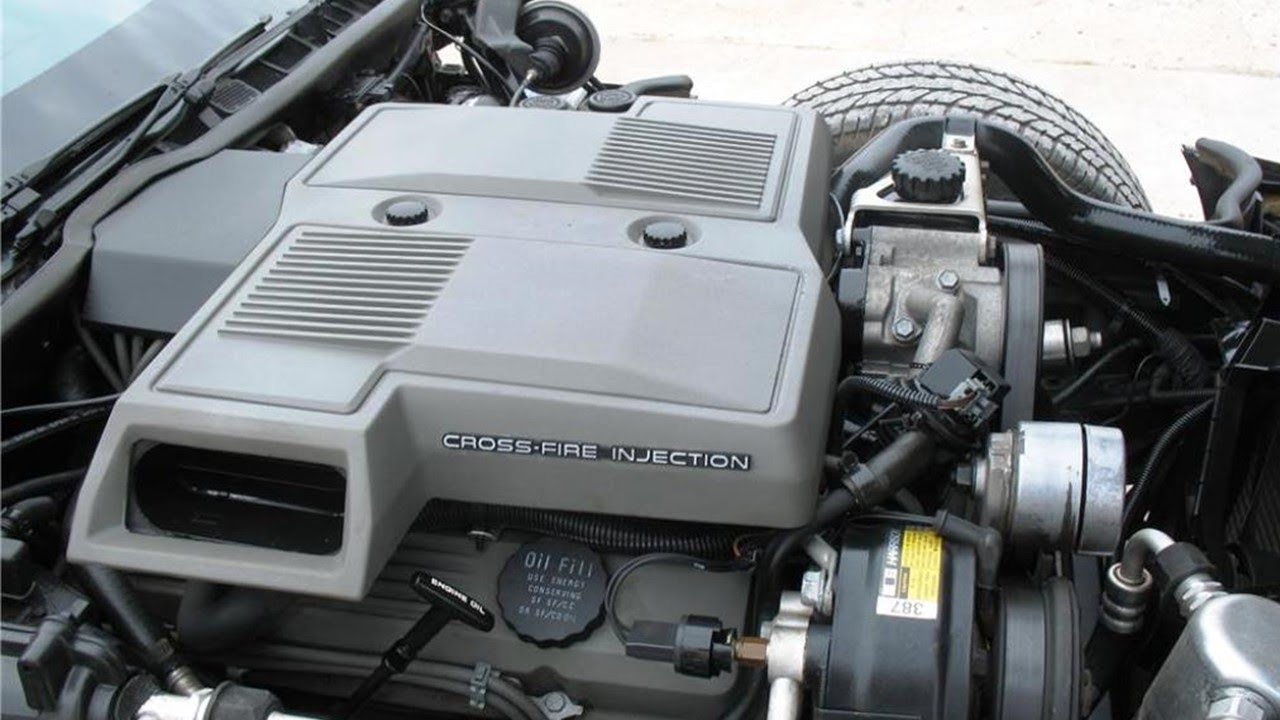
Additionally, the original fifteen-inch wheel/tire combination was deleted, making the sixteen-inch wheel/tire combination the only available choice. This change led to an increase in the base price of the C4 Corvette even after model year production had begun. Another, more interesting change was also made to the interior of the car.
Under the Reagan Administration, it was decided that automobiles should feature a passive restraint system. General Motors suspected that this new administrative mandate would eventually pass into law and so Chevrolet engineers introduced a large, rounded pad that protruded from the passenger side dashboard.
Its sole purpose was to provide additional, passive (meaning that it worked even when the passenger did not consciously choose to utilize it (as with a seatbelt, for example)), passenger crash protection in the event of an accident. Ultimately, the Reagan Administration dropped the restraint proposals, but the pad remained.
Of course, the creation of a new Corvette also meant the introduction of features that provided for greater functionality and ease of operation. The updated design introduced the permanent inclusion of a hatchback. While it’s true that the hatchback feature was included on the 1982 Collectors Edition Corvette, it was decided that the permanent inclusion of a hatchback would provide a greater ease of access to the rear storage/luggage compartment. Similarly, the front hood was re-designed to function as a “clamshell” style cover that made engine and front suspension access far more convenient.
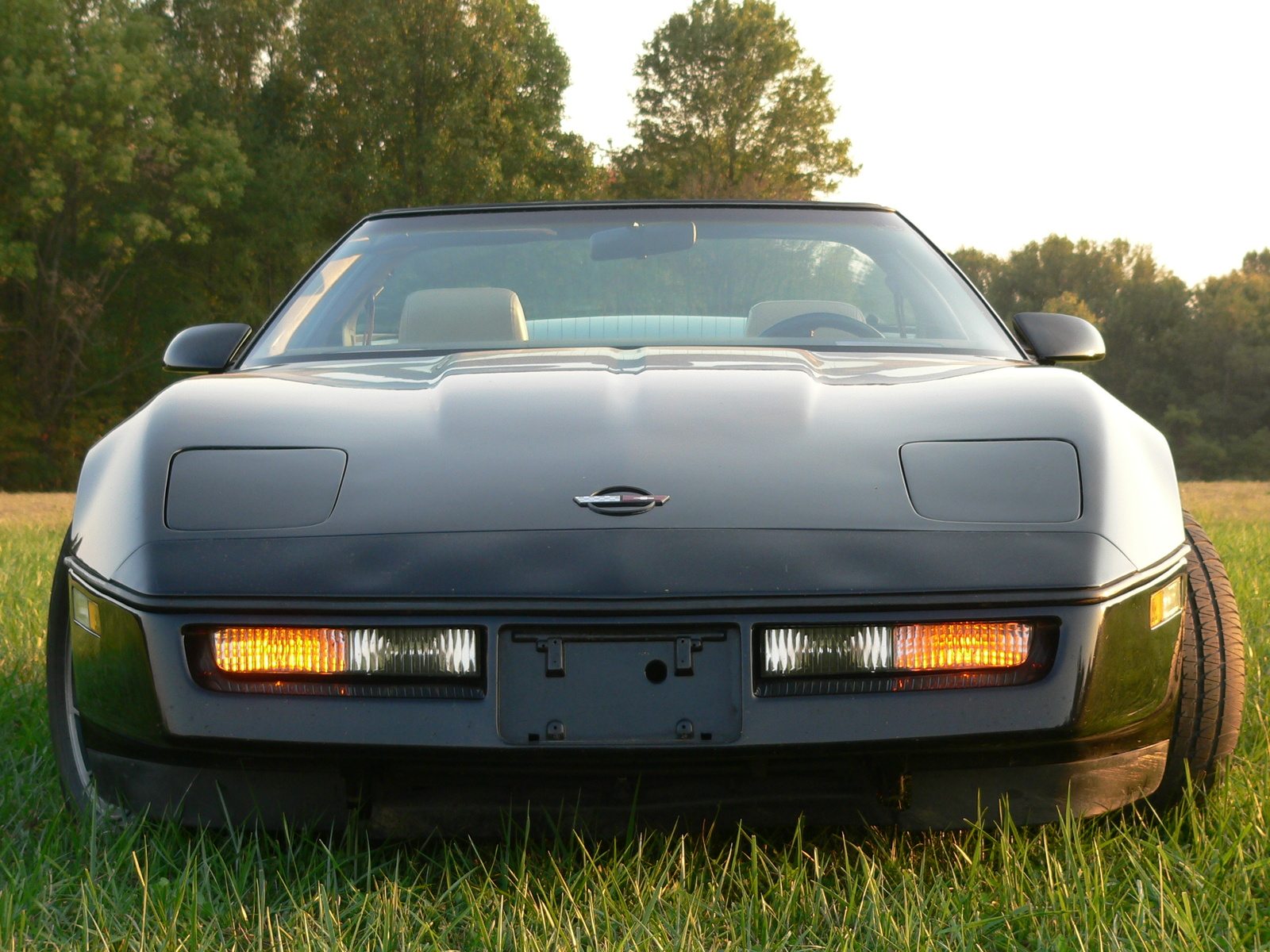
Other changes to the design of the C4 also helped differentiate the new Corvette from all of its predecessors. Prior to the 1984 model, all Corvettes had been built to include a front grill. Since it’s inception in 1953, the Corvette front grill had served as a trademark that was synonymous with Corvette. Of course, in the 30 years that followed, the design of the grill had grown smaller and smaller. At the onset of the 1984 Corvette, it was removed completely. Corvette engineers had developed an undercar ducting system that provided adequate airflow to properly cool the radiator. Replacing the grill was a pair of halogen fog/running lamps which were inspired by the Porsche 928 (and other European sports cars of that era).
Another item that disappeared completely from the C4 Corvette’s design was the existence of actual bumpers on the car. While the new Corvette actually did have bumpers integrated into its design, (which were rated to absorb impact speeds of up to 5 miles per hour), it was done in such a way that they were not differentiated from the rest of the car, giving the car a “bumper-less” appearance.
Still another item of interesting note was the evolution of the hideaway headlights. The C3 Corvette had featured hideaway headlights, but they had been engineered as a flip up design, which meant that the top of the headlight was the same whether it was up or down. The C4 headlight functioned somewhat differently in that the entire headlight assembly rolled outward, the end result of which meant that the headlight cover (when the headlight was recessed) actually became the base of the headlight (when it was exposed and operational.) The primary reason for this change was that while the C3 Corvette’s headlight cover protruded from the top of the headlight (effectively creating drag), concealing the headlight covers provided for greater ease of airflow over and around the headlights, thereby increasing the aerodynamics (even if marginally) of the C4 Corvette
As commercial production of the C4 Corvette began, so did the criticism. Because of the long lead/build time on the 1984 Corvette, General Motors had, perhaps mistakenly, provided many late ’83 model Corvettes to the automotive press for review. Chevrolet engineers invited the automotive media to test the Corvette to the Riverside Parkway as early as December, 1982. These first, regular production Corvettes were being driven – and evaluated – by automobile reviewers all over the country. Initial reviews praised the Corvette for it’s quick acceleration and drivability. They focused on how well it cornered and handled road courses. At the same time, there was significant criticism about how the car treated its occupants. The ride was rough, especially in Corvettes equipped with the Z51 suspension package. While the car was deemed a superior car for the track, it was generally judged as being too harsh-riding for daily driving.
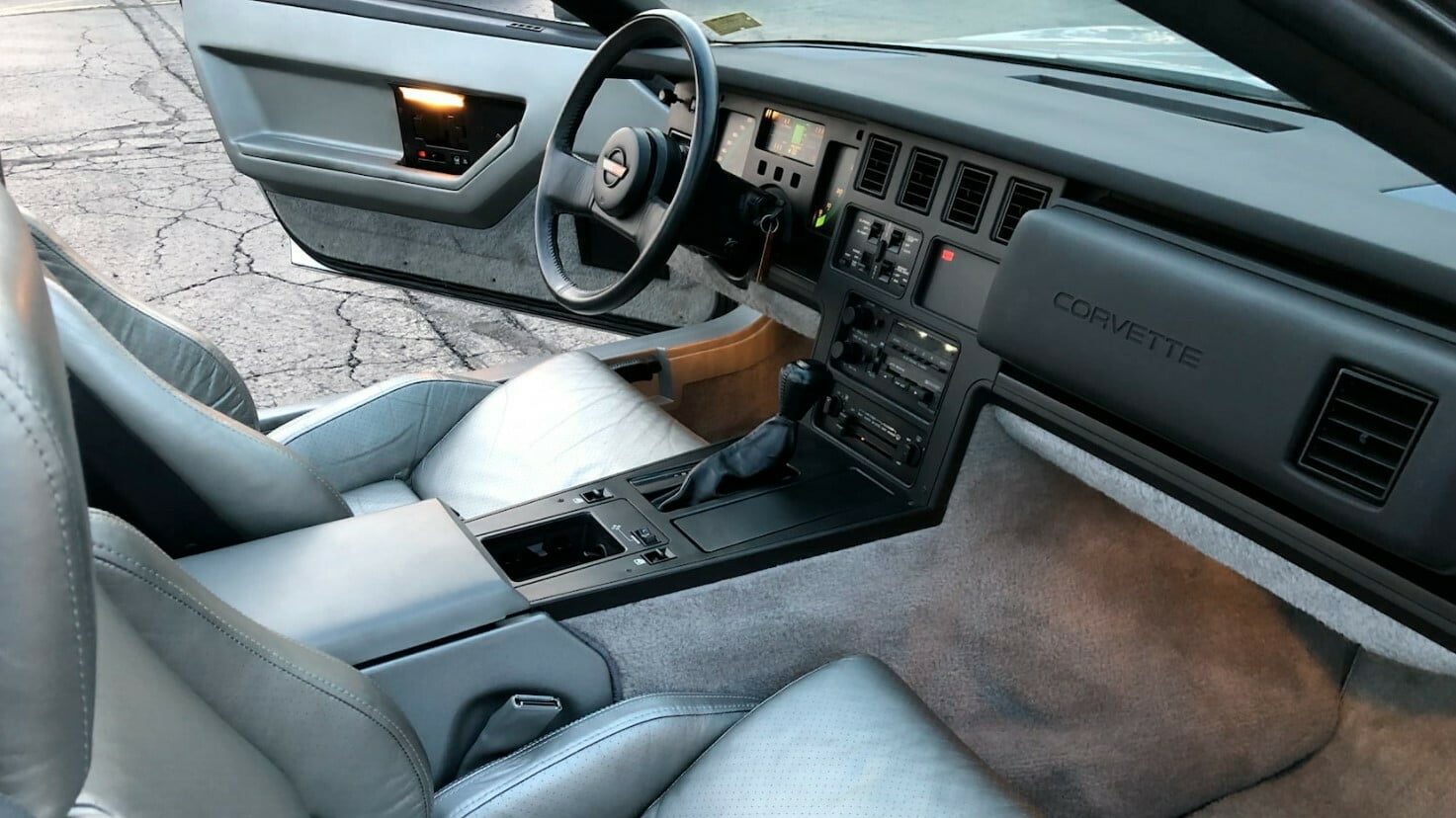
In addition to drivability, other items within the Corvette were met with significant criticism. The interior had earned low marks for excessive exhaust and road noise, for deep door sills (as a result of the unit body frame) that resulted in excessive difficulty climbing into and out of the Corvette, and for the digital dashboard which had been criticized for being difficult to read, especially in sunlight. From its inception, most reviewers pined for a return to the more conventional, user-friendly analog gauges that had been part of the Corvette since the beginning.
Similarly, the 4+3 Overdrive Manual Transmission was met with mixed reviews. First, there was the clunky, high-effort linkage that made stop-and-go driving challenging. Adding to the aggravation was an equally unpleasant high-effort clutch. Perhaps worst of all though was the computer controlled overdrive option. When engaged, the automated override would often try to out-think the driver, making driving tedious and frustrating. Most reviewers agreed that the 4+3 Overdrive Transmission worked best when the manual override option was switched to the “off” position. Ultimately, the 4+3 Overdrive Transmission proved to be unreliable and would also prove to be undesirable to most consumers. As a result, most of the 1984 Corvettes that left the Bowling Green Manufacturing Plant were built with automatic transmissions (a fact that remained true through 1988 when General Motors finally abandoned the 4+3 Overdrive in favor of a more conventional – and functional – manual transmission.)
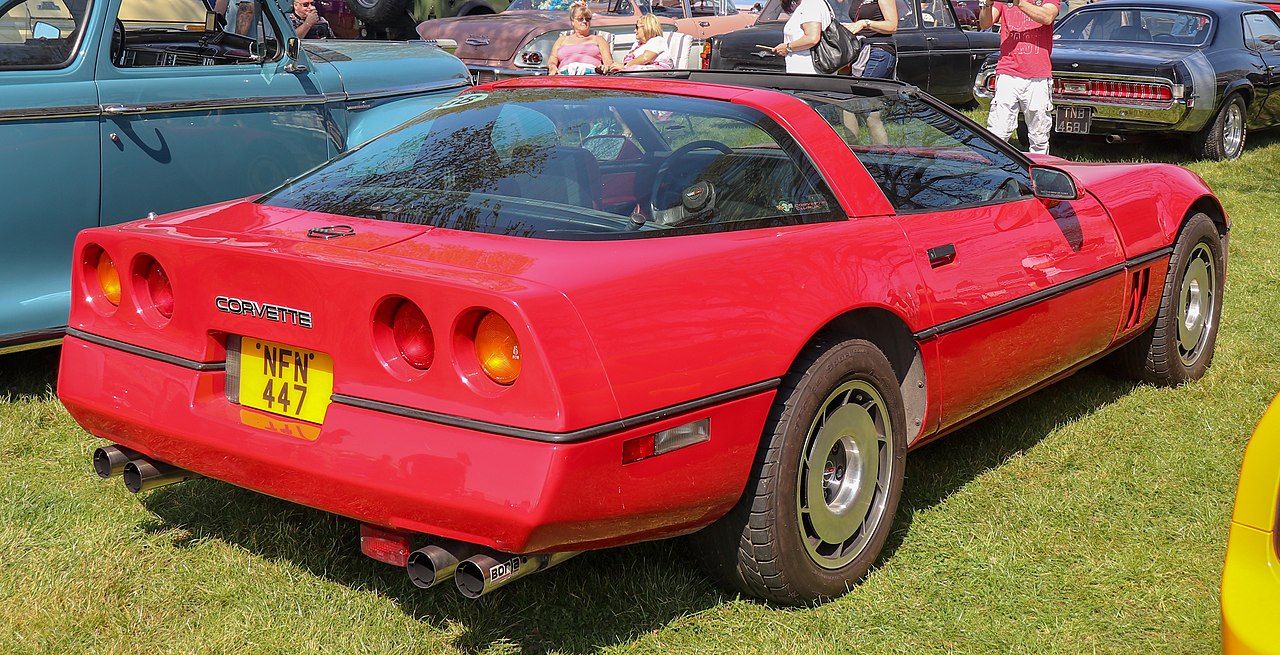
Even the new body style was not without reproach. While critics generally agreed that the new design was sleek and sophisticated, many also commented that the new Corvette was, in comparison with the last year of the C3, remarkably restrained. Some critics even went so far as to criticize the Corvette’s overall lack of bodylines. Where the C3 had the “coke bottle” appearance with its extra wide front and rear hips, the C4 was relatively straight-lined by comparison.
There was, of course, the standard automotive styling that enthusiasts had come to expect of the Corvette: the previously mentioned pop-up headlights, the circular taillights and the wrap around, rear window that was a staple of the late 1982 Corvette.
Production Volumes
Despite the lukewarm reviews that began to circulate about the first model year of the C4, the excitement of being able to purchase an all-new Corvette for the first time in 15 years made the 1984 Corvette a quick sellout. In fact, when combined with the extra-long model year, Corvette’s sales reached a total of 51,547 units – which is the second highest total in Corvette history.
1984 Corvette Specifications & Performance
See the complete breakdown of technical specifications for the 1984 Corvette, including engine, suspension, brakes, body dimensions, and power. Read more: 1984 Corvette Specifications.
Engine & Transmission
The engine was a carryover from the 1982 Corvette. The Cross-Fire fuel injection system was introduced in 1982 for the Corvette, and that same engine makes an appearance in the new models. The engine was a 305 CID V8 that produced 205 horsepower. The only difference was that the horsepower had increased by five since the 1982 models. When first introduced, the car came only with the option of a four-speed automatic transmission, though the Doug Nash “4+3” manual transmission was introduced as an option in January 1984. The top three gears of this transmission featured electronically engaged overdrive.
Performance
0 – 60 mph for the 1984 Corvette came in at 6.7 seconds while the quarter mile was a 15.1 second blast. Given the lack of big updates to the engine, it is no surprise that the performance wasn’t that much better than the 1982 in terms of straight line speed. Read more: 1984 Corvette performance.
1984 Corvette Vehicle Identification Numbers (VIN)
The last six digits begin at 100001 and run through 151547, accounting for each of the 51,547 Corvette Coupes built in 1984. Each Vehicle Identification Number (VIN) is unique to an individual car. For all 1984 Corvettes, the Vehicle Identification Number was stamped on a plate on the inner vertical surface of the left windshield pillar visible through the windshield. Read more: 1984 Corvette VINs.
1984 Corvette Price & Options
Core Features & Factory Options
The new Corvette had a 96.2-inch wheelbase with aluminum suspension components, and these made up the base of a car that’s mechanical elements were all new. The steering was by rack-and-pinion for the first time, the brakes were oversized discs and the car employed 16-inch wheels for the first time (at a time when few other cars had wheels that big. As would be expected, the interior of the car also was brand new. One of the most notable aspects of the new models was the fully digital instrumentation, which were welcomed by some and called “obnoxious” by others.
Much of the extra interior room went towards a larger center console. The area below the center tunnel was used to route exhaust plumbing, driveshaft, catalytic convertor, etc. This meant that the floor could be lowered by two inches. Ground clearance was 5¼ inches (¼ inch more than the C3) so the designers were able to incorporate more headroom along with lowering the roofline by about an inch, which improved aerodynamics. The overall length was 8½ inches less than the C3.
Colors
There were 14 colors for the 1984 Corvette model year. Colors include White, Bright Silver Metallic, Medium Grey Metallic, Black, Light Blue Metallic, Medium Blue Metallic, Yellow, Gold Metallic, Light Bronze Metallic, Dark Bronze Metallic, Bright Red, Silver/Medium Grey, Light Blue/Medium Blue, Light Bronze/Dark Bronze. Bright Red was most popular at 25.11% of the total production, while Black (15.34% of total) and White (12.45%) were the next most popular hues. Read more: 1984 Corvette Colors.
Pricing & Options
The Base Corvette Coupe with 350 cu. in. 205 hp engine with automatic transmission started at $21,800 (up $3,500 versus 1982). Despite the fact that there was only one motor to choose from for the Corvette in 1984, there were still a slew of other options buyers could pick from. One was the Z51 performance suspension package, though many felt that a tightened suspension was overkill for a suspension that already was too stiff.
| CODE | DESCRIPTION | QUANTITY | RETAIL PRICE |
| 1YY07 | Base Corvette Sport Coupe | 51,547 | $21,800.00 |
| AG9 | Power Driver Seat | 48,702 | $210.00 |
| AQ9 | Sport Seats, Leather | 4,003 | $625.00 |
| AR9 | Base Seats, Leather | 40,568 | $400.00 |
| AU3 | Power Door Locks | 49,545 | $165.00 |
| CC3 | Removable Transparent Roof Panel | 15,767 | $595.00 |
| D84 | Two-Tone Paint | 8,755 | $105.00 |
| FG3 | Delco-Bilstein Shock Absorbers | 3,729 | $189.00 |
| G92 | Performance Axle Ratio | 410 | $22.00 |
| KC4 | Engine Oil Cooler | 4,295 | $158.00 |
| K34 | Cruise Control | 49,832 | $185.00 |
| MM4 | 4-Speed Manual Transmission | 6,443 | $0.00 |
| QZD | P255/50VR16 Tires / 16″ Wheels | 51,547 | $561.20 |
| UL5 | Radio Delete | 104 | -$331.00 |
| UM6 | AM-FM Stereo Cassette | 6,689 | $153.00 |
| UN8 | AM-FM Stereo, Citizens Band | 178 | $215.00 |
| UU8 | Stereo System, Delco-Bose | 43,607 | $895.00 |
| V01 | Heavy Duty Radiator | 12,008 | $57.00 |
| YF5 | California Emission Requirement | 6,833 | $75.00 |
| Z51 | Performance Handling Package | 25,995 | $600.20 |
| Z6A | Pear Window + Side Mirror Defoggers | 47,680 | $160.00 |
Read more: 1984 Corvette pricing and factory options
1984 Corvette Gallery
See full 1984 Corvette Image Gallery
1984 Corvette Videos
See more 1984 Corvette Videos


